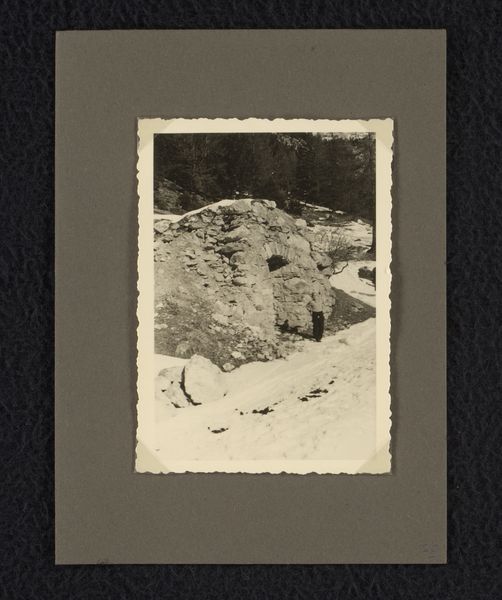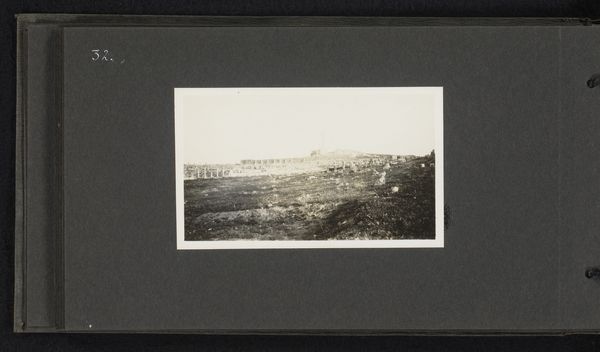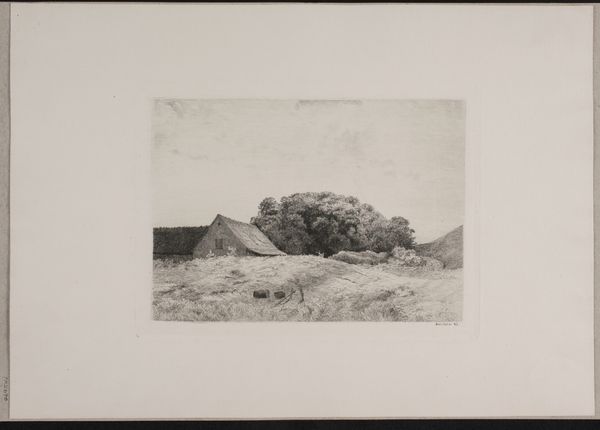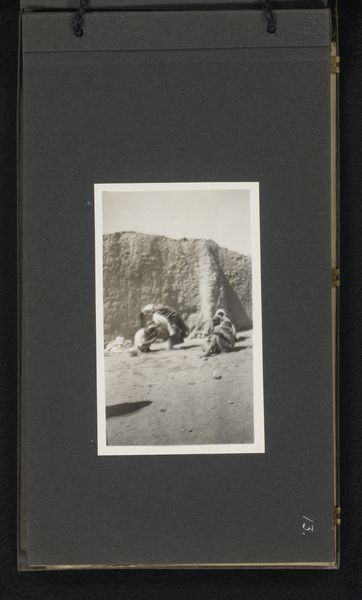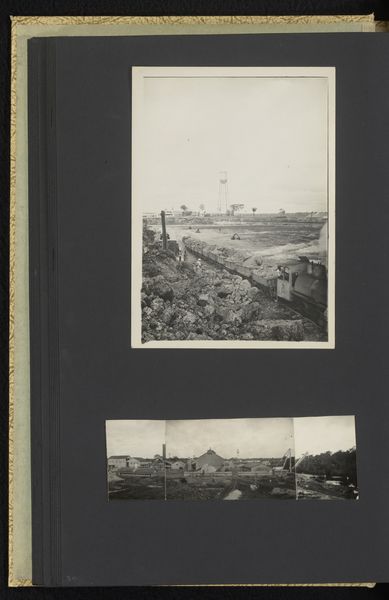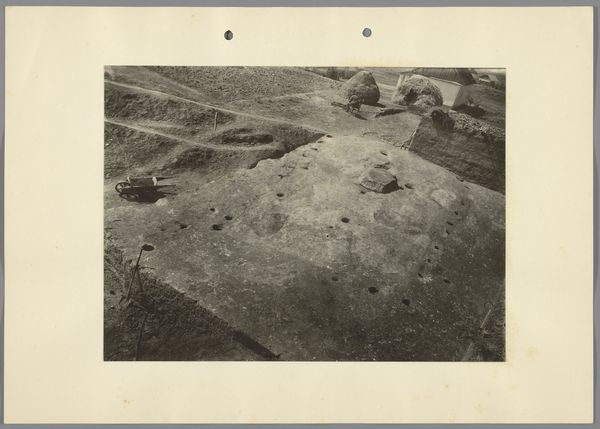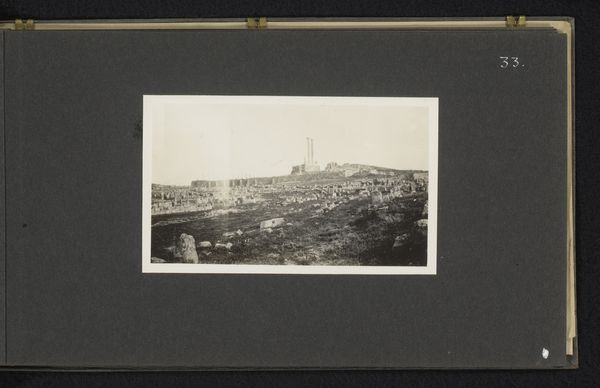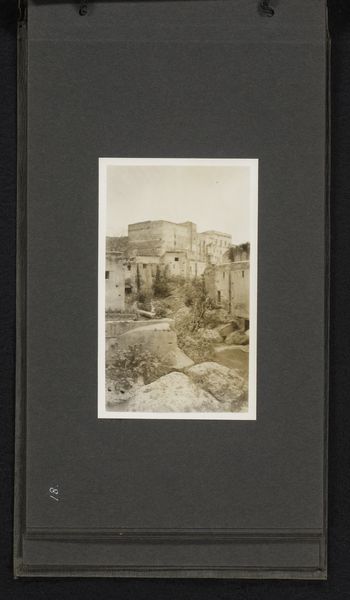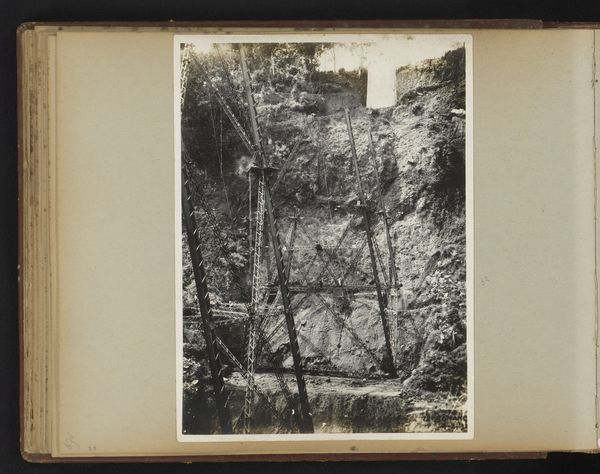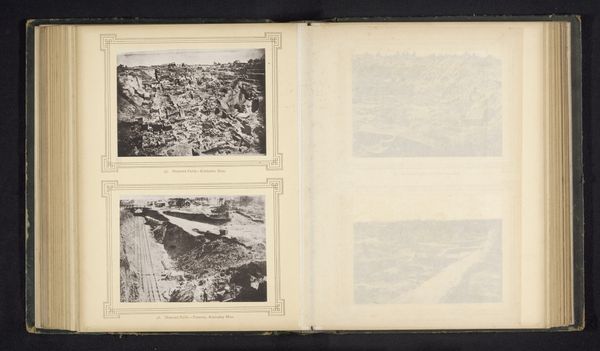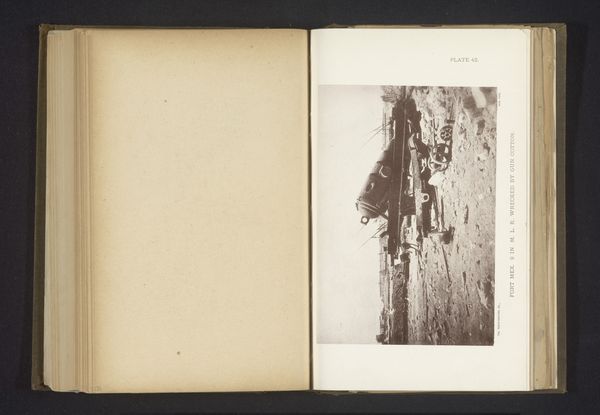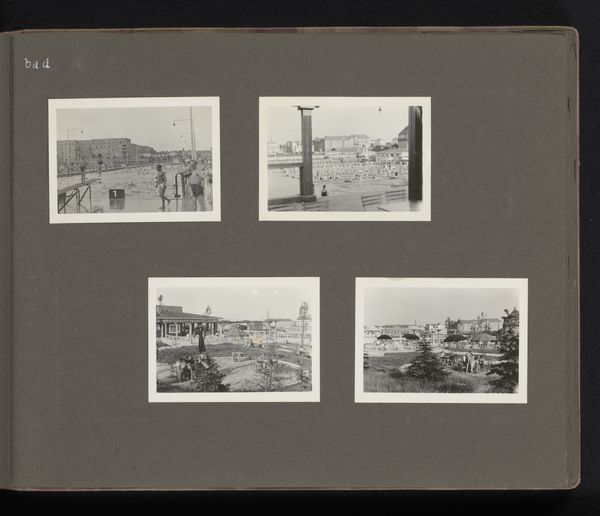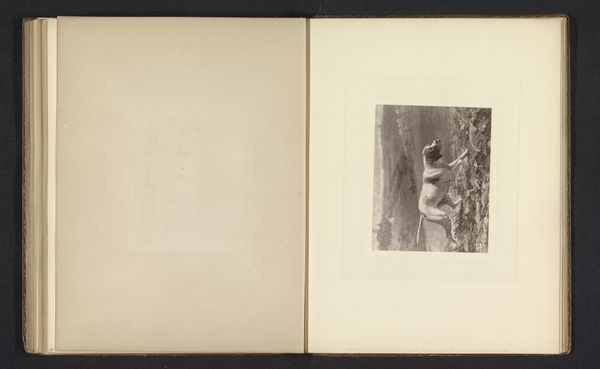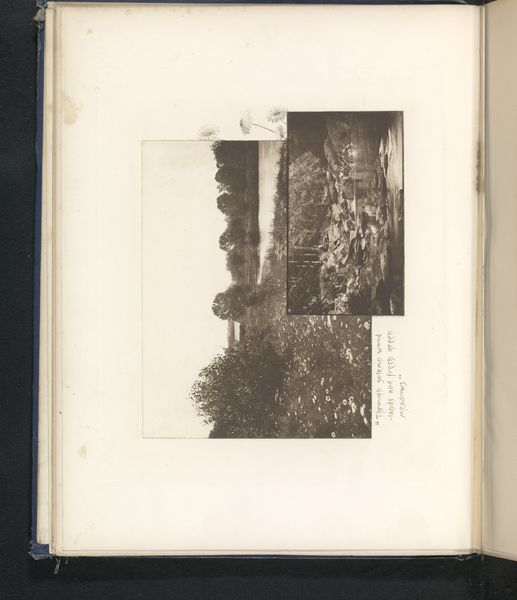
print, photography, architecture
# print
#
stone
#
sculpture
#
landscape
#
photography
#
ancient-mediterranean
#
architecture
Dimensions: height 111 mm, width 68 mm, height 125 mm, width 210 mm
Copyright: Rijks Museum: Open Domain
Curator: This photograph, titled "Ingang tot een kelder van de Thermes du Sud te Timgad," or "Entrance to a cellar of the Southern Baths at Timgad," is attributed to A.G.A. van Eelde, likely taken around 1927. Editor: The composition immediately strikes me. It's this almost severe black and white rendering, where light and shadow battle, creating this palpable sense of depth and texture. The crumbling stonework, it’s almost tactile. Curator: Absolutely. Considering Timgad's history as a Roman colonial city in present-day Algeria, such a structure implies an intriguing power dynamic, contrasting the grandeur of the Roman Empire with the realities of those who inhabited and maintained these spaces, possibly even the enslaved. We can only speculate about how this thermal bath and cellar may have served as not only functional places, but social spaces in ways dictated by Roman, and local cultural practices. Editor: Indeed, and consider how the photograph isolates this entrance. The textures draw the eye in particular ways – brick, rough-hewn rock. There's a beautiful interplay between geometric and organic forms in the wall’s design, but these materials suggest labor, endurance. The light suggests both the baking North African heat and a shadowy interior where there might be secrets hidden underground, unseen by the structures along the higher ground that make the far horizon line. Curator: Given Van Eelde's artistic background, the colonial context certainly colors his approach. While presenting these ruins, whose voices are we really hearing, and which ones are silent? What of indigenous perspectives on this architecture now viewed through the lens of European archeology and photography? The gaze of the colonizer subtly dictates what's deemed "worthy" of preservation and attention, doesn't it? Editor: That gaze brings a perspective of absence but perhaps also allows us to observe the essence of an object, form and composition revealed to a patient viewer who isn’t trying to excavate meaning right away, but wants to observe its intrinsic construction. I think of the light and how it dances and almost creates a story for our eye to explore the photo, even as we want to examine what meaning these spaces may have held. Curator: Seeing through your lens reminds me that the stillness in Van Eelde's photograph lets the space echo its stories. Even though some historical contexts might seem lost, that play between darkness and light, and textures are perhaps inviting ways into reflecting on its existence and to whom this space truly belonged, as both ruins and active community spaces in its time. Editor: For me, what began as visual delight has certainly been greatly enhanced by considering its historical and social layers.
Comments
No comments
Be the first to comment and join the conversation on the ultimate creative platform.
